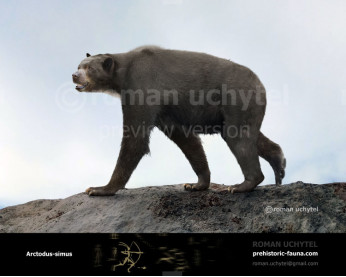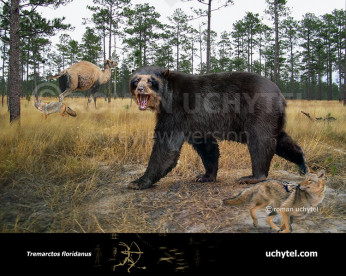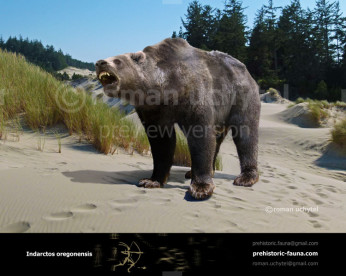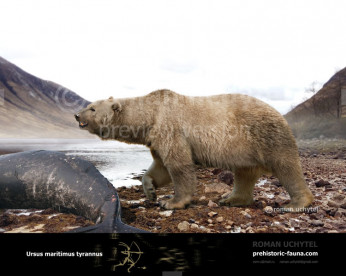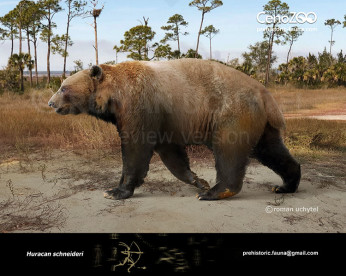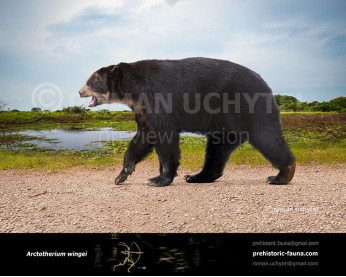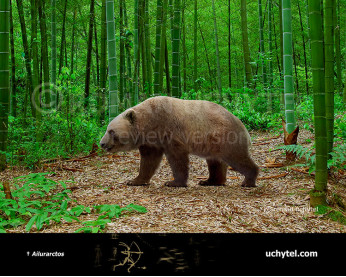Agriotherium
0101Agriotherium (Agriotherium Wagner, 1837)
Order: Carnivora
Family: Ursidae
Size: 2.5 m in length, 165 cm in height, 600 kg of weight
Time period: the Miocene - Pleistocene (North America, Europe, Africa, and Asia).
Typical representative: Agriotherium africanum Hendey, 1980
Agriotherium is an extinct genus of Ursidae of the Miocene through Pleistocene epochs, endemic to North America, Europe, Africa, and Asia living from ~13.6–2.5 Ma, existing for approximately 11.1 million years. Agriotherium was about 2.7 metres in body length, making it larger than most living bears. Except for the extinct subspecies of modern polar bear Ursus maritimus tyrannus and Arctotherium , Agriotherium was along with the short-faced bear, Arctodus simus the largest member of terrestrial Carnivora. It had dog-like crushing teeth. Its primary diet was carnivorous and secondary was omnivorous possibly classifying this animal as mesocarnivore. With a body mass greater than most large ungulates (horses, bovines, camelids, and rhinoceroses), it is probable that Agrotherium could have preyed on these.
Agriotherium (Agriotherium Wagner, 1837)
Order: Carnivora
Family: Ursidae
Size: 2.5 m in length, 165 cm in height, 600 kg of weight
Time period: the Miocene - Pleistocene (North America, Europe, Africa, and Asia).
Typical representative: Agriotherium africanum Hendey, 1980
Agriotherium is an extinct genus of Ursidae of the Miocene through Pleistocene epochs, endemic to North America, Europe, Africa, and Asia living from ~13.6–2.5 Ma, existing for approximately 11.1 million years. Agriotherium was about 2.7 metres in body length, making it larger than most living bears. Except for the extinct subspecies of modern polar bear Ursus maritimus tyrannus and Arctotherium , Agriotherium was along with the short-faced bear, Arctodus simus the largest member of terrestrial Carnivora. It had dog-like crushing teeth. Its primary diet was carnivorous and secondary was omnivorous possibly classifying this animal as mesocarnivore. With a body mass greater than most large ungulates (horses, bovines, camelids, and rhinoceroses), it is probable that Agrotherium could have preyed on these.

-797x638.jpg)
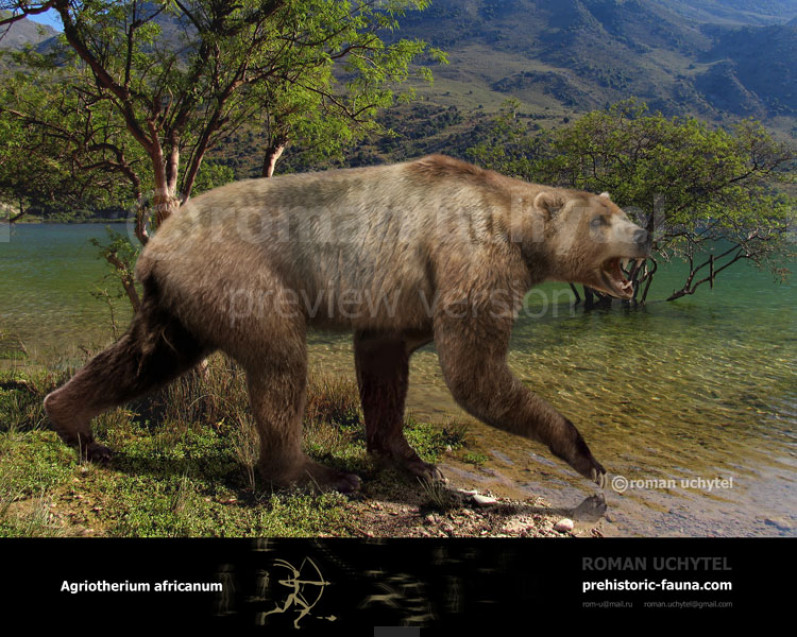
-797x638.jpg)


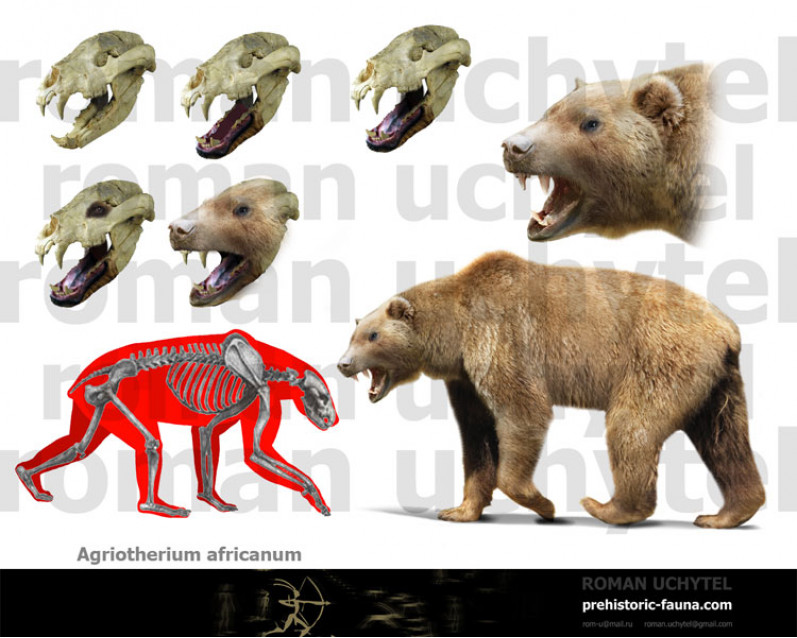
-70x56.jpg)

-70x56.jpg)



